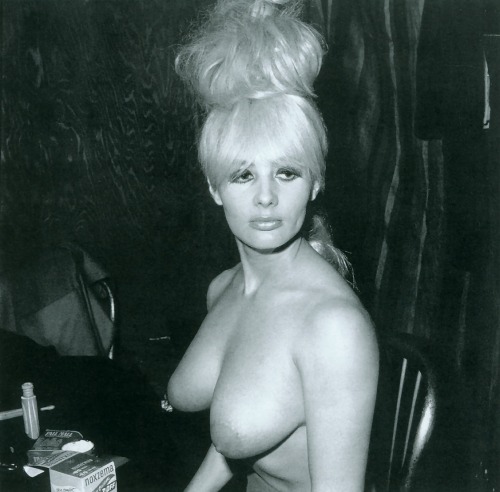THIS ARTICLE IS REPRINTED FROM THE BLOG BELOW. I am reprinting it because Carol Doda was the flash point for the North Beach Renaissance in the mid-sixties. So we have to thank her for starting that trend because it led to Dave Rapkin of the Galaxie Club on Broadway and Kearney to offer us a year contract there. Hopefully, our club was similar to others there; come for the exposed mammary glands stay for the music and entertainment. As I remember it there was great entertainment all over that area. From Broadway where Ramsey Lewis, Bobby Freeman, Chubby Checker, and Joey Dee and the Starliters played as well as the nearby Hungry I and Purple Onion who featured at one time or another Barbara Streisand, Woody Allen, and Mort Sahl, who later played with us at Caesar’s Palace. Not to mention the Smother’s Brothers and The Kingston Trio and a host of other acts. The ‘naughty but nice’ atmosphere helped lend San Francisco a European city sophistication and attract celebrities and top level audiences. So thanks for getting everybody’s attention Carol; and thanks for remembering it, Tony!
Rather than start this series with a politician, business or military leader, important and influential in the city’s development though many have been, I thought I would focus on someone who epitomises the colourful, free spirited and boundary stretching personality of the city.
Carol Ann Doda was born of soon to be divorced parents on 29 August 1937 in Solano County, California, growing up in Napa. She dropped out of school and become a cocktail waitress and lounge entertainer at aged 14.
Described by the Internet Movie Database as a “lovely, busty and curvaceous blonde bombshell” she achieved fame, or notoriety depending upon your point of view, on 19 June 1964 at the Condor Club at the corner of Broadway and Columbus in North Beach, by dancing in a topless swimsuit, the first recognised entertainer of the era to do so, and spawning similar exhibitionism across the nation’s clubs. Such was her popularity that delegates from the 1964 Republican National Convention flocked to see her and she was given a film role as Sally Silicone in Head, created by Jack Nicholson and Bob Rafelson, and featuring The Monkees. She appeared in another six films.

Wikipedia describes her act, which she performed twelve times nightly, thus: (it) “began with a grand piano lowered from the ceiling by hydraulic motors; Doda would be atop the piano dancing. She descended from a hole in the ceiling. She go-go danced the Swim to a rock and roll combo headed by Bobby Freeman as her piano settled on the stage. From the waist up Doda emulated aquatic movements like the Australian crawl. She also did the Twist, the Frug and the Watusi”.
She later enhanced her bust size from 34B to 44DD through a total of 44 silicone injections, earning her breasts the nicknames of “the new Twin Peaks of San Francisco”. She had them insured for $1.5 million with Lloyd’s of London.
Doda created a further seismic impact in the entertainment industry on 3 September 1969 by dancing completely naked at the Condor, though she was obliged to put the bottom part of her costume back on again in 1972 after a rule was passed prohibiting nude dancing in establishments that served alcohol.
After appearing for more than a decade on KGSC-TV she returned to dancing at the Condor three times a night in 1982, “in a gold gown, traditional elbow-length gloves, and a diaphanous-wraparound. Her clothing was removed until she wore only a G-string and the wraparound. In the final portion she was attired in only the wraparound. Her small body looked slimmer without clothes which was emphasised by the dwarfing effect of her breasts”.
Retiring from stripping later in the decade she formed her own rock band, the Lucky Stiffs. She now runs the highly respectable “Carol Doda’s Champagne and Lace Lingerie Boutique” in Cow Hollow. Well into the new millenium, however, she was performing – with her clothes on – at a variety of North Beach clubs, including Amante’s and Enrico’s Supper Club, singing club standards like “All of Me”.
Despite the notoriety she earned by being the first dancer to break the topless / bottomless taboos in the U.S., her act was rarely regarded as sleazy. As she herself said: “I always just wanted to give people a good time, have fun. Nothing really dirty – just fun”.
And finally she has been truly immortalised in having a hamburger named after her at Bill’s Place on Clement at 24th in the Outer Richmond!
 One of the best biographies written by a musician!
One of the best biographies written by a musician!







